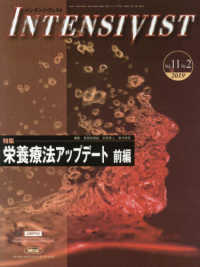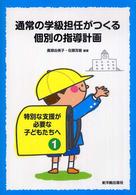Description
This volume presents the reader with thirty-one short chapters that capture an exciting new moment in the study of the Meiji Restoration. The chapters offer a kaleidoscope of approaches and interpretations of the Restoration that showcase the strengths of the most recent interpretative trends in history writing on Japan while simultaneously offering new research pathways.
On a scale probably never before seen in the study of the Restoration outside Japan, the short chapters in this volume reveal unique aspects of the transformative event and process not previously explored in previous research. They do this in three core ways: through selecting and deploying different time frames in their historical analysis; by creative experimentation with different spatial units through which to ascertain historical experience; and by innovative selection of unique and highly original topics for analysis. The volume offers students and teachers of Japanese history, modern history, and East Asian studies an important resource for coming to grips with the multifaceted nature of Japan’s nineteenth-century transformation.
The volume will also have broader appeal to scholars working in fields such as early modern/modern world history, global history, Asian modernities, gender studies, economic history, and postcolonial studies.
Table of Contents
Introduction [Timothy D. Amos and Akiko Ishii, National University of Singapore]
Part One: World
1.The Meiji Restoration and the Long Nineteenth Century [Mark Ravina, University of Texas at Austin, USA]
2.Local Labour and the Trajectory of the Meiji Restoration [Robert Hellyer, Wake Forest University, USA]
3.Freedom, Slavery and the Meiji Restoration, Revisiting the Maria Luz Incident [Bill Mihalopoulos, University of Central Lancashire, UK]
Part Two: Governance
4.The Meiji Restoration and Governmentality [David Howell, Harvard University, USA]
5.Rulings on Tokugawa Status Infringements and Local Governing Practices in Early Meiji Osaka Court Records [Timothy D. Amos, National University of Singapore]
Part Three: Asia
6.From Boy Emperors to Business Opportunities: Glimpses of the Meiji Restoration from the China Coast Press c1868-70 [Donna Brunero, National University of Singapore]
7.Reformists and Revolutionaries: Filipinos View Meiji Japan, 1880s-2000s [Ricardo Jose, University of the Philippines (Diliman)]
8. Early 20th Century Vietnamese Intellectuals’ Perceptions of the Meiji Restoration and its Lessons for Manpower Cultivation [Phan Hai Linh, Vietnam National University]
Part Four: Ideas
9.Questioning Modernity: A Historiographical Sketch of the Meiji Enlightenment [Akiko Ishii, National University of Singapore]
10.The “Meiji Restoration as Ideal and Failure: The Specter of a Second Innovation [Ben Middleton, Ferris University, Japan]
Part Five: Nation-Empire
11.Meiji and the Bonin Islands: Ambiguous Bodies and Ambivalent Borders [David Chapman, University of Queensland, Australia]
12.Reconstructing State-Formation and Empire-Building in Meiji Japan [Tristan R. Grunow, Pacific University, USA]
Part Six: Culture
13.Inventing Ise in Meiji Japan [John Breen, International Research Center for Japanese Studies, Japan]
14.Haikai Time in Meiji Japan [Scot Hislop, National University of Singapore]
15.Tokugawa v. Meiji: A Nocturnal Interpretation [Laura Nenzi, University of Tennessee, USA]
Part Seven: Medicine and Health
16.Blood, Bandages, and Bickering: Doctors in the Boshin War [Ellen Nakamura, University of Auckland, New Zealand]
17.Toward Creating New Mind, New Body: Yojo as a Late Meiji Ideology [Sookyeong Hong, Tsuda University, Japan]
Part Eight: Gender and Status
18.The Meiji Restoration as Social History: With a Focus on Tokyo [Yuriko Yokoyama, National Museum of Japanese History, Japan]
19.Cattle Plague, Livestock Disposal, and the Dismantling of the Early Modern Status Order [John P. Porter, Tokyo University of Foreign Studies, Japan]
20.Kaihōrei kara Suihei Sengen e -- From Emancipation by the State to Liberation by Our Own Efforts [Ian Neary, University of Oxford, UK]
Part Nine: Production and Consumption
21.From Ramune to Ryokucha: Continuities and Discontinuities in Japanese Beverage Consumption [Rebecca Suter, University of Sydney, Australia]
22.Post-Restoration Transformations and Merchant Guilds: The Oil Seed Merchants of Osaka [Mio Shimazaki, Osaka Museum of History, Japan]
Part Ten: Region and Locality
23.The Meiji Restoration and Local History: Reflections Based on Osaka’s Izumi Region [Takashi Tsukuda, Osaka City University, Japan]
24.Traditional Culture and Modern Administration: The Meiji Government’s Hot Spring Policy and Local Community [Yoichi Takahashi, Miyagi Gakuin Women’s University, Japan]
25.Whose Restoration? Observations from a Study of the Kagoshima Teacher Training School, 1875-1877 [Robert Crawford, National University of Singapore]
Part Eleven: Urban Space
26.The World of the Pleasure Quarters in the Transitional Period from Early Modern to Modern Japan: Research on the Yokohama Pleasure Quarters [Ashita Saga, Osaka City University, Japan]
27.Changes in the Regulation of Unlicensed Prostitutes in the Ansei Period (1854-1860) and “Horie-Shinchi” [Kanami Yoshimoto, Kyoto Seika University, Japan]
Part Twelve: Modernity
28.The Words of Modernity before Modernity [Olivier Ansart, University of Sydney, Australia]
29.The Background of Japan’s Modernization: What made the Meiji Restoration Possible? [Hiroshi Kurushima, Chiba University, Japan]
Part Thirteen: Politics
30.February 11, 1889: The Birth of Modern Japan [Lionel Babicz, University of Sydney, Australia]
31.From Shogunal Benevolence to Monarchial Compassion: The Shifting Status of “Voices from the Bottom” in the Meiji Restoration [Yoshihiro Yamasaki, Tokyo Future University, Japan]








